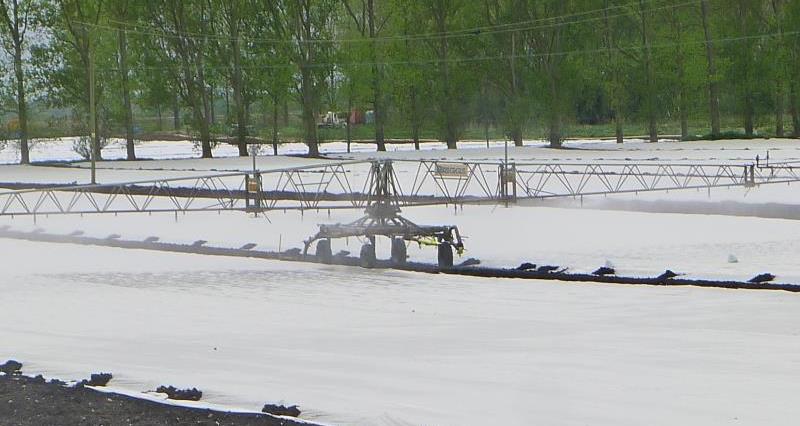While summer prospects for water resources availability for spray irrigation in the East of England are still currently described as ‘moderate’, the agency is warning that this status may be downgraded to ‘poor’ in some catchments if rainfall continues to be below average.
‘Moderate’ status across the east of England means that some controls on surface water abstraction are probable if the weather is hot and dry. Controls on abstraction from groundwater are possible in small, sensitive groundwater areas.
Recharge to groundwater over winter has been below average resulting in some aquifer levels being below normal for the time of year, and river flows are suffering as a result. A dry April has meant that soil moisture deficits have developed early.
In response to the dry April most river flows in the region are classified as ‘below normal’.
Groundwater levels are currently classified as ‘normal’ or ‘below normal’ with the ‘below normal’ sites tending to be towards the South. Bedfordshire, Cambridgeshire, Lincolnshire and Northamptonshire area are currently described as ‘moderate’.
However, the dry end to March and the lack of rainfall during April has led to a sharp recession in flows in the Cam, Rhee and Granta catchments. Without significant rainfall soon, it is very likely that Hands Off Flow (HOF) conditions will come into force during May and remain in place until the situation improves. Prospects for other flowing catchments remain 'moderate'.
It is also very likely that due to the recent lack of rainfall, Hands Off Flow conditions will be reached and local water management actions will be required in Fenland catchments.
Norfolk north of the River Yare is currently described as ‘moderate’. Most Norfolk rivers are close to their normal flows with some catchments 'below norma'l for April. This 'below normal' category reflects the current groundwater levels in Norfolk and the lack of surface runoff in April. Although conditions are not as favourable as they have been for the last four years, they remain outside of the range that will potentially lead to 'poor' conditions.
The Suffolk Crag is described as ‘moderate’. Rainfall deficits have been greatest this winter on the Suffolk coastal margins and are significantly greater than have been experienced in Norfolk. The high storage afforded by the crag aquifer should however buffer the recession rates. Recent monitoring of the crag catchment indicates flows close to the normal range.
However, inland Suffolk is currently described as ‘moderate to poor’. The inland catchments in Suffolk have only a moderate base flow and have experienced the greatest rainfall deficit over the last nine months (up to 160 mm below average). Current groundwater levels indicate summer flows may fall to notably low levels.
Prospects for Essex are described as ‘moderate’. The North Essex rivers are currently experiencing a slightly elevated level of base flow relative to the catchments further north. This is partly because of the better situation in the shallow aquifers. However, with high seasonal demands North and mid-Essex rivers from the Stour to Can may experience flows into a ‘notably low’ category in the summer. Flows in South Essex rivers from the Wid to the Mardyke may possibly fall into 'exceptionally low' levels at any time of year if there is reduced runoff,but are generally regulated by treated effluent discharges.
